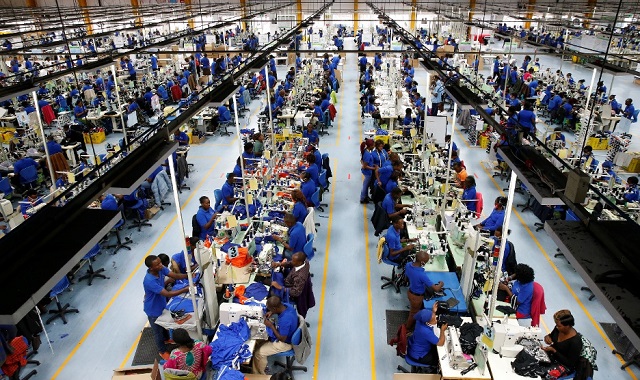
They are negotiating what could be a model for Africa
Kampala, Uganda | THE INDEPENDENT | The U.S. and Kenya announced a trade and investment partnership in July 2022. During a virtual meeting on July 14, 2022, United States Trade Representative, Katherine Tai, and Kenya’s Ministry of Industrialisation, Trade and Enterprise Development Cabinet Secretary, Betty Maina, launched the United States-Kenya Strategic Trade and Investment Partnership (STIP).
Building on their June 13, 2022 meeting in Geneva, they agreed that their governments will pursue enhanced engagement in a wide range of areas with a view to increasing investment, promoting sustainable and inclusive economic growth, benefiting workers, consumers, and businesses (including micro-, small-, and medium-sized enterprises), and supporting African regional economic integration. They identified the following areas of enhanced cooperation: Agriculture, anti-Corruption, digital trade, environment and climate change action, good regulatory practices, Micro, Small and Medium Enterprises (MSMEs), promoting workers’ rights and protections, supporting participation of women, youth, and others in trade, standards collaboration and trade facilitation and customs procedures. Talks have been progressing on the way forward in those nine areas.
The Strategic Trade and Investment Partnership (STIP) will be the first significant trade partnership between the U.S. and a country in sub-Saharan Africa. Countries in the region currently rely on the African Growth and Opportunity Act (Agoa), which offers duty- and quota-free access to the U.S. market. The new deal is seen as a model for future agreements between the U.S. and other sub-Saharan African countries. But its position on workers needs a rethink.
The labour provisions proposed under the Kenya-US deal are not new. They have become standard features of all U.S. free trade agreements since first appearing in the North American free trade agreement of 1994.
Kenya and the U.S. undertake to work together: “to advance and protect labour rights through enforcement of and compliance with labour laws, promotion of social dialogue, and cooperation in other areas of mutual interest on labour and employment priorities, including with respect to forced labour in global supply chains”.
There is currently very little information regarding the potential scope of the labour provisions. But there is reason to believe they will borrow heavily from precedents of the US-Mexico-Canada Agreement.
Under the USMCA, Contracting Parties commit to four core international labour standards. These are: freedom of association and collective bargaining; elimination of all forms of forced or compulsory labour; effective abolition of child labour; and elimination of discrimination in respect of employment and occupation.
I have recently authored a paper on the labour issues raised in the proposed free trade deal between the U.S. and Kenya. I have also studied China’s bilateral treaties and reviewed its trade deals with African countries.
Ordinarily, a trade agreement that aims at promoting workers’ rights should be welcomed. Kenya faces numerous obstacles to effective protection of the rights of workers despite having many laws with this aim. But the imposition of stringent labour standards via a trade agreement raises concerns about: additional international obligations, high implementation costs, sovereignty, hidden motives, and the uneven playing field.
In my opinion, the inclusion of strong labour provisions in the STIP may have very little to do with protecting workers in Kenya. It may be more about sidelining China in Africa, protecting U.S. jobs, and enhancing US soft power in the region.
1. International obligations
The controversy over the issue of trade and labour standards is not new. Nearly thirty years ago, developing countries rejected attempts by some industrial nations to subject labour standards to World Trade Organisation rules and disciplines. Introducing them through a free trade pact implies contracting states will be required to adopt and enforce global labour laws. Including labour provisions in the STIP will have the effect of imposing additional commitments on Kenya beyond its current obligations as a member of the World Trade Organisation. Quite apart from the cost of implementation, imposing labour commitments through the backdoor of a trade agreement exposes Kenya to costly dispute settlement procedure and possible trade sanctions in event of a breach.
2. Sovereignty
The Kenyan parliament would likely play a very limited role in shaping the scope and content of the labour provisions of the trade agreement. In contrast, the U.S. Congress plays a significant role in shaping the labour provisions of all pacts involving the U.S.
The limited input of Kenyan workers in the design of the labour provisions of the agreement is also a concern. By contrast, U.S. workers and labour unions have had the opportunity to express their views on these issues. In its Strategic Plan FY 2022 – FY 2026, the United States Trade Representative (USTR) state that advancing a worker-centered trade policy “will require extensive engagement with unions, worker advocates, and underserved communities to ensure that workers’ perspectives and values play an integral and respected role in the development and implementation of U.S. trade policy.”
3. Hidden motives
It’s the U.S. view that poor labour standards distort global markets and are a barrier to U.S. businesses and workers competing on a level playing field.
The deal with Mexico and Canada prohibits them from importing goods from countries that use forced or compulsory labour, including forced or compulsory child labour. It provides for mandatory inspection of facilities to be sure of compliance in those countries.
Labour provisions in Kenya could therefore have a direct impact on its trade with China, member states of the East African Community and other African states. It could mean that entities that are neither American nor Kenyan are inspected.
4. Uneven playing field
While the U.S. has the capacity and resources to monitor labour conditions in Kenya and to enforce relevant provisions of the STIP, neither the Kenyan government nor its private sector has the capacity to do so in the U.S. So the spotlight will be on Kenya while labour rights violations in the U.S. are likely to be swept under the carpet.
Despite a plethora of laws and regulations purporting to protect workers in the U.S., violations are commonplace, particularly among migrant workers. Forced labour and human trafficking of migrant farm workers in the U.S. is rampant.
Until recently, migrant workers in the U.S. were coerced into continuing to work despite violations of their rights.
5. High implementation costs
The cost of implementing labour provisions is significant. Substantial resources will be required to amend laws, appoint and train inspectors, and monitor compliance. Maintaining good records, establishing labour-management committees and providing arbitration services comes with costs. Under the deal with Mexico and Canada, a decision made by a Party on the provision of enforcement resources does not excuse a Party’s failure to comply to enforce its labor laws.
What next?
Workers are the bedrock of the global economy and deserve full protection. Including labour provisions in the STIP could transform Kenya’s labour laws. It could also put pressure on China to take workers’ rights in Africa and Kenya more seriously.
But the idea of embedding robust labour obligations in a trade agreement between Kenya and the U.S. is highly controversial and should be weighed carefully. Such bilateral agreements must be scrutinised to ensure that their benefits for Kenya and Kenyan workers outweigh their costs. It’s important too that labour standards are without protectionist motive or effect.
If the Kenya-US deal must contain labour provisions, I have five proposals to make: Kenya must reject pressure to replicate the labour provisions in the US-Mexico pact. They might not be a good template.
The labour provisions should include rights enshrined in core international human rights instruments most of which are yet to be ratified by the U.S.
The issue of implementation costs and capacity constraints must be addressed upfront with binding long-term commitment on the US to provide necessary technical assistance and bear the implementation costs.
The failure of the U.S. government to address labour rights and migrant rights violations in the U.S, including in the agriculture sector, must also be on the table.
A human rights and sustainability impact assessment of the labour provisions is necessary. Such an impact assessment should take into account vulnerable workers in Kenya including female workers, workers with disability, child workers, as well as workers in the rural areas.
*****
Uche Ewelukwa Ofodile is Professor of International Law, Intellectual Property Law and Food Law, University of Arkansas
Source: The Conversation
 The Independent Uganda: You get the Truth we Pay the Price
The Independent Uganda: You get the Truth we Pay the Price


